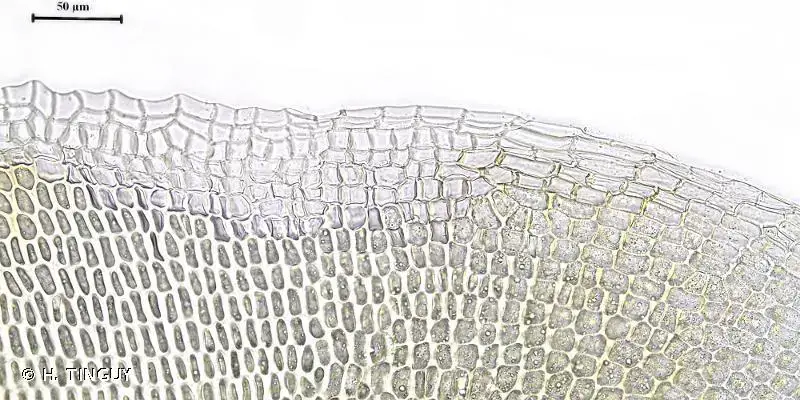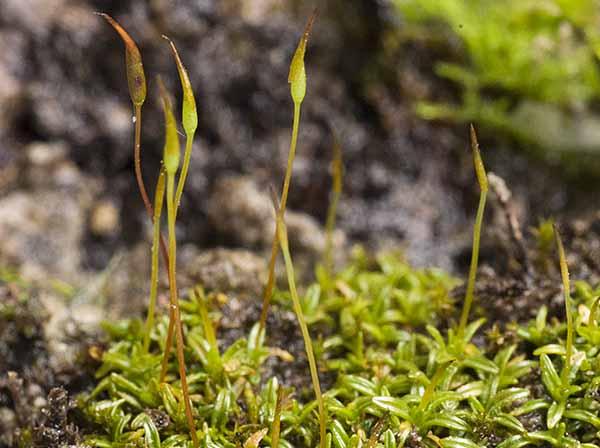
267465.jpg from: https://inpn.mnhn.fr/espece/cd_nom/3910
Introduction
The world of bryophytes, or non-vascular plants, is a fascinating realm that often goes unnoticed by many. Among these diminutive yet resilient organisms lies the Aloina rigida (Hedw.) Limpr., a moss species belonging to the Pottiaceae family, commonly known as Aloina. This unassuming plant has captured the interest of enthusiasts and researchers alike, offering a glimpse into the intricate workings of nature’s smallest wonders.
Background
Before delving into the specifics of Aloina rigida, it’s essential to understand the broader context of bryophytes. These ancient plants, which include mosses, liverworts, and hornworts, have been around for over 400 million years, predating even the earliest vascular plants. Despite their small stature, they play crucial roles in various ecosystems, acting as pioneers in colonizing new environments and contributing to soil formation and water retention.
Main Content

267463.jpg from: https://inpn.mnhn.fr/espece/cd_nom/3910?lg=en
Morphology and Identification
Aloina rigida is a small, acrocarpous moss that forms dense, cushion-like tufts or mats. Its leaves are rigid, lance-shaped, and often curved when dry, giving the plant a distinctive appearance. The stems are typically unbranched, and the capsules (spore-bearing structures) are erect and cylindrical, borne on short setae (stalks). One of the key identifying features of this moss is its reddish-brown color, which can vary depending on the environmental conditions.

2010_Aloina_rigida_2009_11_22_0687.jpg from: https://www.bryo.cz/index.php?p=mechorosty_foto&site=default&gallery=aloina_rigida&id=2010
Global Distribution and Habitat
Aloina rigida is a cosmopolitan species, meaning it can be found on almost every continent. It thrives in a wide range of habitats, from arid and semi-arid regions to temperate and even some tropical areas. This moss is often found growing on soil, rocks, walls, and even tree bark, showcasing its remarkable adaptability to various substrates.

997_Aloina_rigida_2008_10_05_img_3558.jpg from: https://www.bryo.cz/index.php?p=mechorosty_foto&site=default&gallery=aloina_rigida&id=997
Ecological Roles and Adaptations
Despite its diminutive size, Aloina rigida plays a vital role in its ecosystems. As a pioneer species, it helps stabilize and enrich soils, creating favorable conditions for other plants to establish themselves. Additionally, this moss acts as a microhabitat for various invertebrates, providing shelter and food sources.

1001_Aloina_rigida_2009_11_22_0671.jpg from: https://www.bryo.cz/index.php?p=mechorosty_foto&site=default&gallery=aloina_rigida&id=1001

Aloina-rigida-3-scaled.jpg from: https://www.britishbryologicalsociety.org.uk/learning/species-finder/aloina-rigida/
One of the most fascinating aspects of Aloina rigida is its ability to withstand extreme environmental conditions. It possesses a remarkable capacity for desiccation tolerance, allowing it to survive prolonged periods of drought by entering a state of dormancy. When moisture becomes available, the moss can rapidly rehydrate and resume its metabolic activities, a trait that has earned it the admiration of researchers studying drought resistance mechanisms.
Case Studies/Examples
In a study conducted in the Negev Desert of Israel, researchers found that Aloina rigida played a crucial role in stabilizing soil surfaces and facilitating the establishment of vascular plants. The moss’s ability to retain moisture and create favorable microhabitats contributed to the overall biodiversity of the region.
Another example comes from the arid regions of Australia, where Aloina rigida has been observed growing on the bark of eucalyptus trees. This adaptation allows the moss to take advantage of the limited moisture available in these harsh environments, showcasing its remarkable resilience and resourcefulness.
Technical Table

1c0a7ce7348f46d7b41be1c0bfb48332.jpg from: https://www.pinterest.com/pin/1794-copper-engraving-james-sowerby-aloina-rigid-moss-botanical-flower–698761698412239982/

998_Aloina_rigida_2008_10_05_img_3568.jpg from: https://www.bryo.cz/index.php?p=mechorosty_foto&site=default&gallery=aloina_rigida&id=998
| Characteristic | Description |
|---|---|
| Phylum | Bryophyta |
| Class | Bryopsida |
Order
 Aloina-rigida-ivanov2013-primorsky-BCH-9215.jpg from: https://green.tsu.ru/redbook/?p=1250 |
Pottiaceae |
| Genus | Aloina |
| Species | Aloina rigida (Hedw.) Limpr. |
| Growth Form | Acrocarpous, cushion-like tufts or mats |
| Leaf Shape | Lance-shaped, rigid, often curved when dry |
| Capsule | Erect, cylindrical, borne on short setae |
| Color | Reddish-brown |
Habitat
 999_Aloina_rigida_2008_10_18_img_4056.jpg from: https://www.bryo.cz/index.php?p=mechorosty_foto&site=default&gallery=aloina_rigida&id=999 |
Soil, rocks, walls, tree bark |
| Distribution | Cosmopolitan |
Conclusion
The Aloina rigida (Hedw.) Limpr. moss, a member of the Pottiaceae family, is a remarkable example of nature’s resilience and adaptability. Its ability to thrive in diverse environments, from arid deserts to temperate regions, and its crucial ecological roles in soil stabilization and microhabitat creation make it a fascinating subject of study. As we continue to explore the intricate world of bryophytes, the Aloina rigida serves as a reminder of the incredible diversity and complexity that can be found in even the smallest of organisms.
Ponder this: How can the study of resilient species like Aloina rigida inform our understanding of environmental adaptation and contribute to the development of sustainable practices in the face of global challenges?